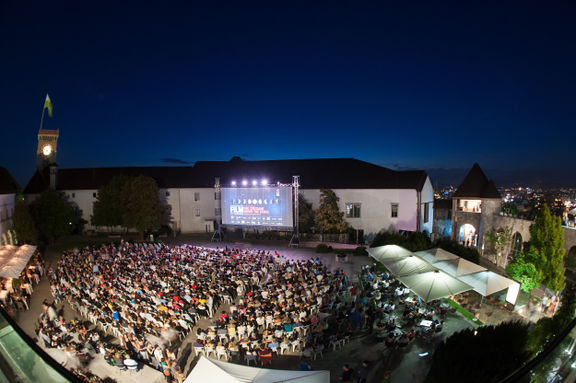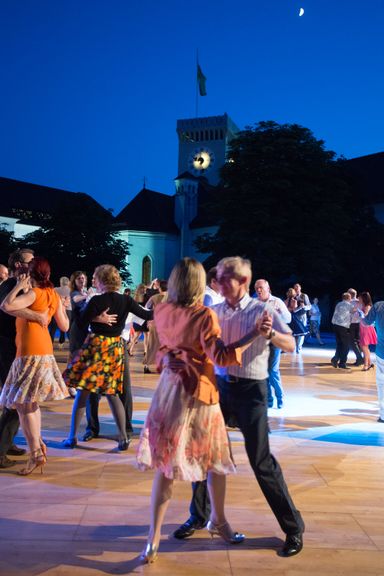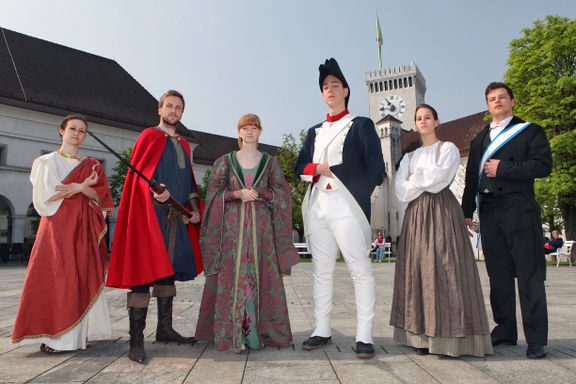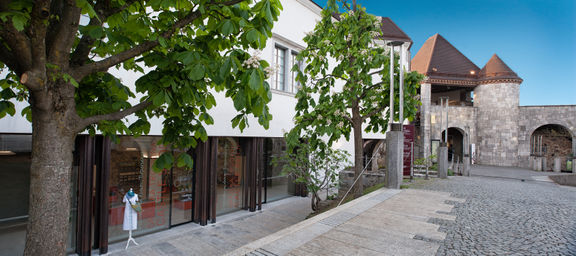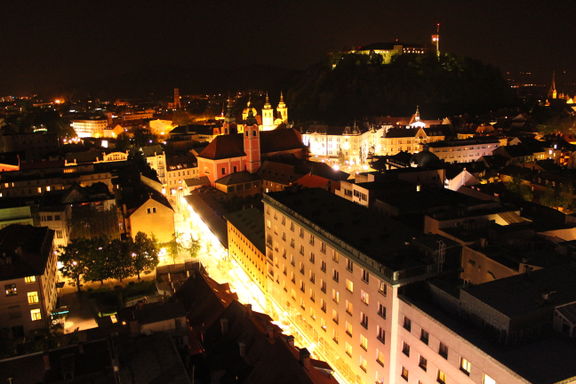Difference between revisions of "Ljubljana Castle"
(LJ Festival) |
|||
| Line 13: | Line 13: | ||
| email = info@ljubljana.si | | email = info@ljubljana.si | ||
| website = http://www.ljubljanafestival.si/en/ljubljana_castle | | website = http://www.ljubljanafestival.si/en/ljubljana_castle | ||
| − | | managed by = Ljubljana Urban Municipality | + | | managed by = Ljubljana Urban Municipality |
| − | | managed by 2 = Festival Ljubljana | + | | managed by 2 = Festival Ljubljana Public Institute |
| opening hours = | | opening hours = | ||
| frequency = | | frequency = | ||
| Line 32: | Line 32: | ||
{{Teaser| | {{Teaser| | ||
| − | [[Ljubljana Castle]] is situated on a small hill in the centre of Ljubljana. It has been rebuild several times. Some parts of today’s structure originate in 15th century and has recently been renovated for more than 40 years by various architects. One can trace Jože Plečnik’s various ideas at the castle hill. It is a spot of [[Festival | + | [[Ljubljana Castle]] is situated on a small hill in the centre of Ljubljana. It has been rebuild several times. Some parts of today’s structure originate in 15th century and has recently been renovated for more than 40 years by various architects. One can trace Jože Plečnik’s various ideas at the castle hill. It is a spot of [[Ljubljana Festival]] as well as of many other events, including weddings, exhibitions, Mini Teater – the Theatre for Children and Youth. |
}} | }} | ||
| Line 63: | Line 63: | ||
== See also == | == See also == | ||
| − | * [[Festival | + | * [[Ljubljana Festival]] |
* [[Fužine Castle]] | * [[Fužine Castle]] | ||
* [[Roman Emona]] | * [[Roman Emona]] | ||
Revision as of 00:39, 10 December 2010
History
The oldest castle on the hill probably dates back to the 11th century. Written sources mention it in 1144 as the seat of the feudal estate of the Carinthian Dukes of Spanheim. In the first half of the 13th century they conferred town privileges on the settlement on the Ljubljanica River. In approximately the same period a stone-built fortress was erected on the Castle Hill to better protect the town; together with the two extensions of the town walls, it closed the fortification ring of the Mestni trg (Town Square).
In 1335 the castle was transferred into the seat of Carniola to the Habsburgs, thereafter remaining their hereditary property for several centuries.
The present castle, historically the third one, was built by the Duke and later Emperor Frederick III. It was erected in the 15th century after its predecessor had been completely destroyed. Except for the outer walls, the castle chapel, the corner towers and two entrance towers, the rest of the buildings originated in the 16th and 17th centuries.
As late as 1848 the appearance of the castle was enhanced by the dominant watch tower replacing the wooden one, which gave the present architectural ensemble its final form and the castle its characteristic silhouette, corrected in 1990s.
During its long and varied history the castle was mostly a military fortress, but also functioned as the seat of provincial rulers, with the city tower being used by pipers and fire guards. In spite of all this the role of the castle gradually dwindled, as did the strategic importance of the fortress and walls. It was rescued from total destruction by a governmental decree of 1814 to turn it into a penal institution. In 1905 the castle was bought by the City of Ljubljana and turned into multi-residential building for the citizens, but mainly for prisoners and the poor.
Renovation
Since 1988 Ljubljana Urban Municipality has been carrying out continuous archaeological research at Ljubljana Castle, which confirmed the continuous settlement of the hilltop.
In 1930s Jože Plečnik’s idea was to build a new conical parliament to replace the castle, but managed to realise only Šance (redesigned remains of the fortifications) and the avenue. First renovation work was carried out in 1940s by the plans of town planner Boris Kobe. The recent renovation work was carried out in 1964–2004 by architects Miha Kerin, Majda Kregar and Edo Ravnikar Jr., which gave the castle new steeper roof, higher watch tower, new access, and regulated defensive corridor around the margin of the former fortified walls, linking the renovated castle objects together.
At the end of 2006 the Ljubljana Urban Municipality connected the Ljubljana Castle with the old city core by an urban means of transport - a funicular railway. The ride up the slope of the castle hill has been included in a regular guided walking tour of the city organised by the Ljubljana Tourist Board. Lower station of funicular railway is located at Krek Square, next to the Dome and the city open-air market place.
Premises
The castle offers a touristic viewing tower, a virtual museum, a chapel, and several cultural venues – Hribar's Hall, Palatium, Pentagonal Tower, Rocks Hall, Estate Hall, White and Blue Halls, Erasmus Tower, Archers' Tower and Pipers' Tower. Cultural events also take place in the castle courtyard.
In addition to performing arts events, exhibition projects and film screenings (i.e. Film under the Stars during the summertime), some permanent exhibitions featuring history of the city are displayed at Ljubljana Castle.
Perhaps the most attractive of these is the Virtual Museum – Ljubljana Squares through the Ages, prepared by the City Museum of Ljubljana and sponsored by the Tobacco Factory, which presents the history of Ljubljana. In this exhibition the urban and architectural development of the city is presented alongside its cultural and economic growth to afford an impression of the life of its inhabitants.
Another important permanent exhibition is entitled Settlement of the Ljubljana Basin – the Urban Development of Ljubljana; it explains how the area was settled and enlightens the development of the settlement itself from prehistory to the present using drawings, ground plans, projects, photographs, prints and models, and provides a brief survey of the historical periods of Ljubljana.
See also
External links
- Ljubljana Castle web page
- Ljubljana Castle on Wikipedia
- Virtual guide to Ljubljana Castle
- Ljubljana Castle on Architectural Guide
- Mini Teater website
- Ljubljana Funicular Railway on Wikipedia



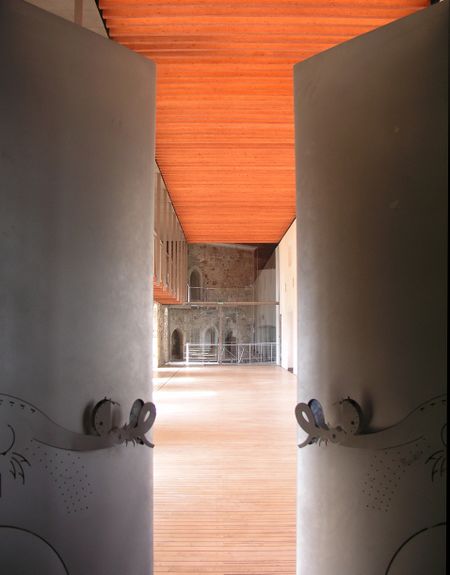

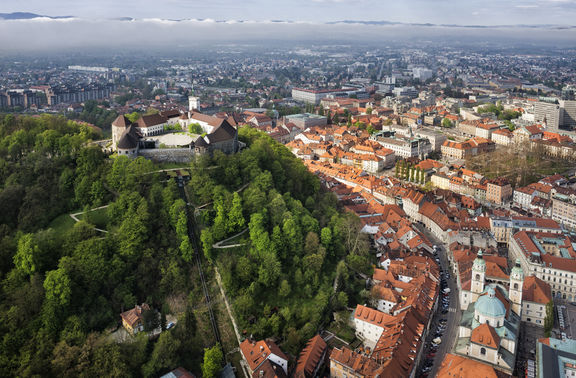

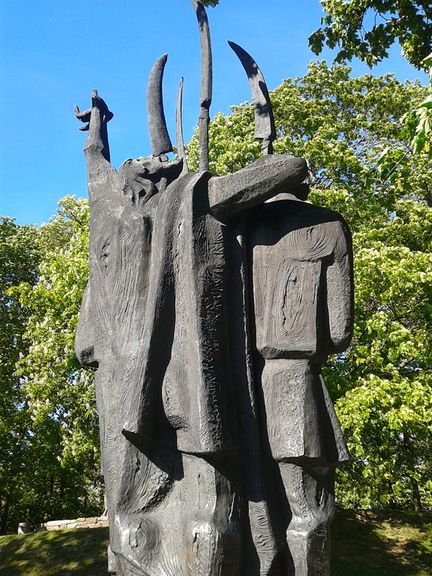

![Ljubljana Castle and Slovene Philharmonic, shot from the recently renewed Congress Square [Kongresni trg], 2012](/images/thumb/2/25/Ljubljana_Castle_2012_distant_view.jpg/576px-Ljubljana_Castle_2012_distant_view.jpg)
